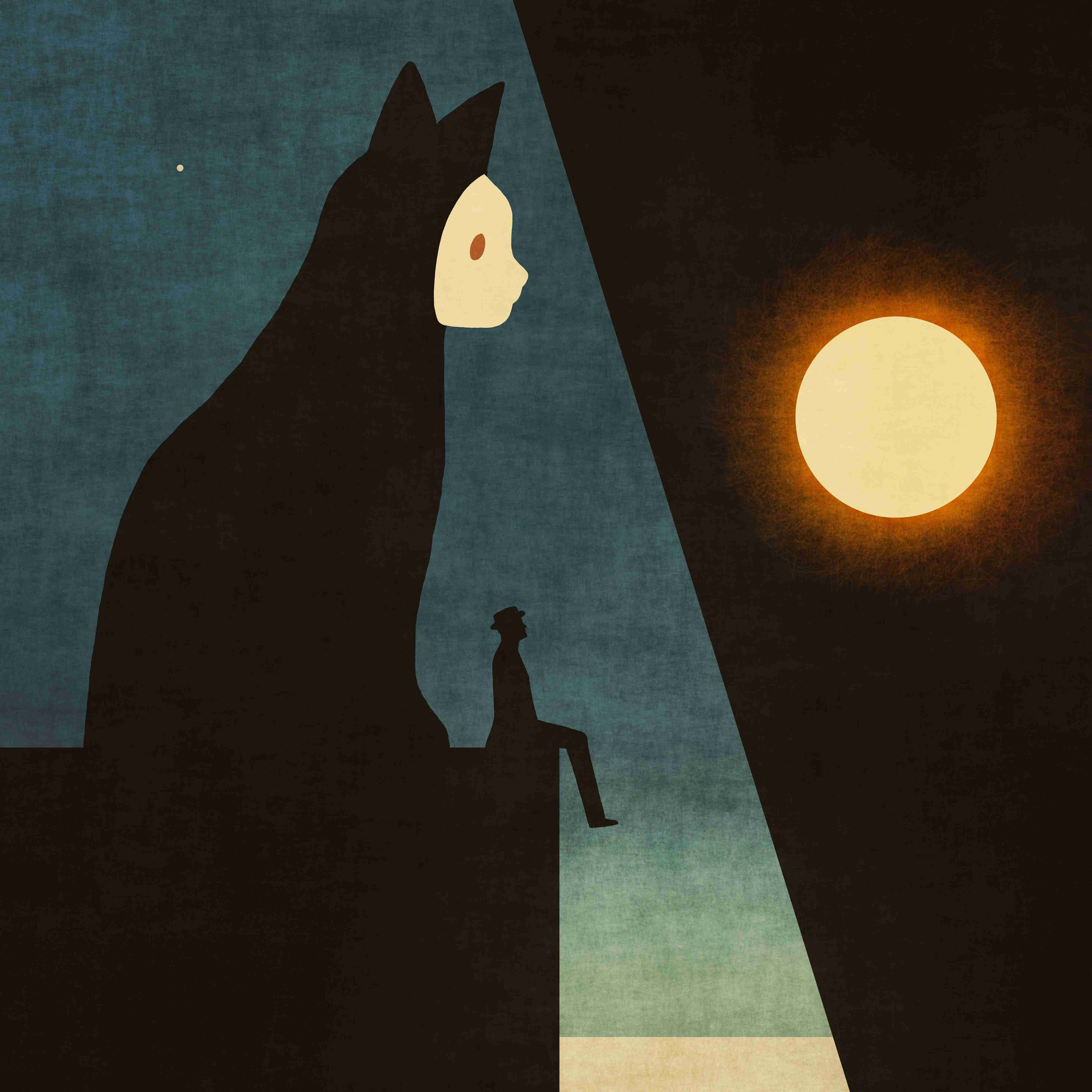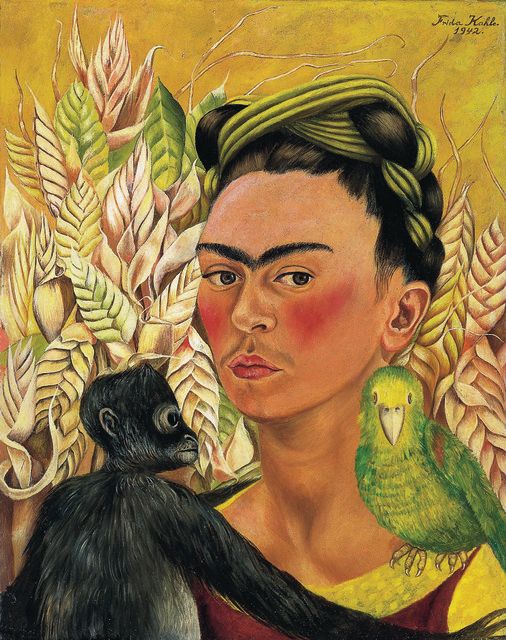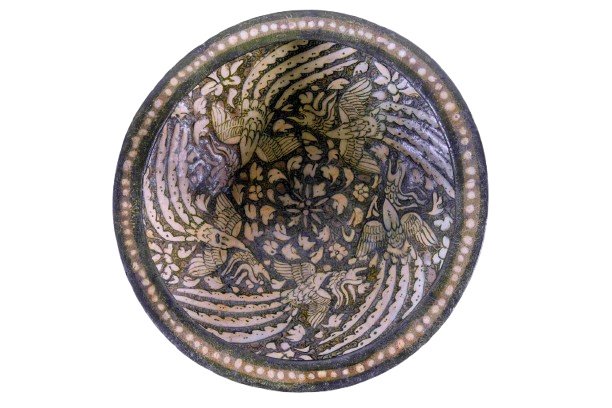A Timeless Story of Love — Layla and Majnun
A painting of Qays and Layla, centred around the poem "Al Mu'nisa" by Qays ibn Al Mulawwah. Drawing: Gouache on paper, Calligraphy: Arabic ink on crushed mulberry paper. Drawing: Obaid Ba Humaid, Calligraphy: Mohammed AlSalhani, Painting: Courtesy of the artist Obaid Ba Humaid.
Every nation in the world has immortal love stories that have left a profound impact on their conscience and coloured their memories across generations, celebrating love and infatuation, and fascinated by the lives of lovers.
These stories have become legends and tales told throughout the ages, including the story of the most famous lover, Qays ibn Al-Mulawwah, his love for Layla Al-Ameriya, and the sweet poems he composed about her, which were recited by lovers after him time and time again to express their feelings.
This great poet was described as Majnun Layla for his infatuation with her and his devotion to her despite her being forced to marry someone else.
One of the most beautiful poems by Qays ibn Al-Mulawwah is his famous poem, "Al Mu'nasa." We at Ithraeyat are pleased to present it to you in this unique and collaborative artwork, the result of collaboration between artist Obaid Ba Humaid and calligrapher Mohammed Al Salhani. Together, they created a stunning artwork that brings together the two symbols of love, Qays and Layla, with the poem "Al Mu'nasa" at its center.
Initially, the artist Obaid intended to paint an Arab woman wearing a veil decorated with floral motifs resembling the style of ancient Islamic miniatures. Then, his friend, the calligrapher Mohammed, noticed the exaggerated lengthening of the henna drawing on the woman's fingers, as henna was usually applied only to the fingertips. Obaid expressed his surprise and said, "By doing this are you referencing Layla Al-Ameriya, when Qays sang about her, saying:
And when we met on the slopes of Ramah,
I found the palms of Al Amiriya red.
I said, "Did your palms turn dyed after our separation?"
She said, "God forbid! That never happened.
But when I found you gone,
I wept blood until I soaked the ground with it.
I wiped my tears with the tips of my fingers.
And it became dye in my hands, as you can see."
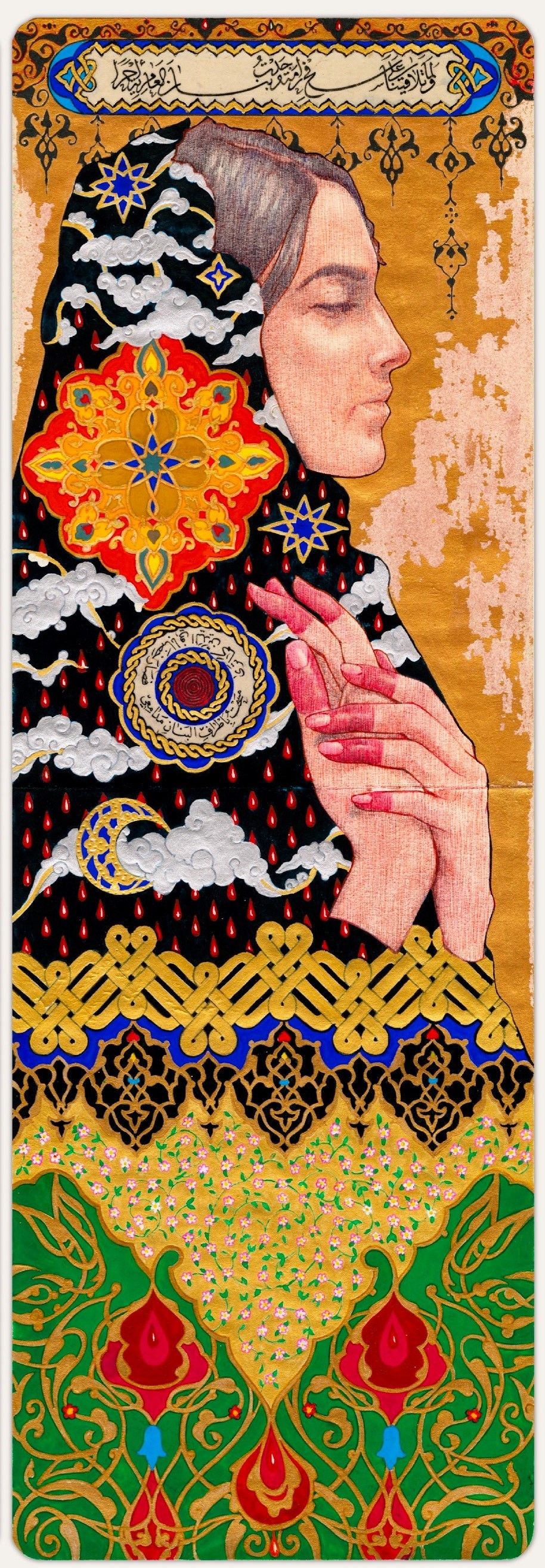
Layla Al-Ameriya. Drawing: Ink and gouache on paper، Calligraphy: Arabic ink on crushed mulberry paper. Drawing: Obaid Ba Humaid، Calligraphy: Mohammed AlSalhani. Courtesy of the artist Obaid Ba Humaid.
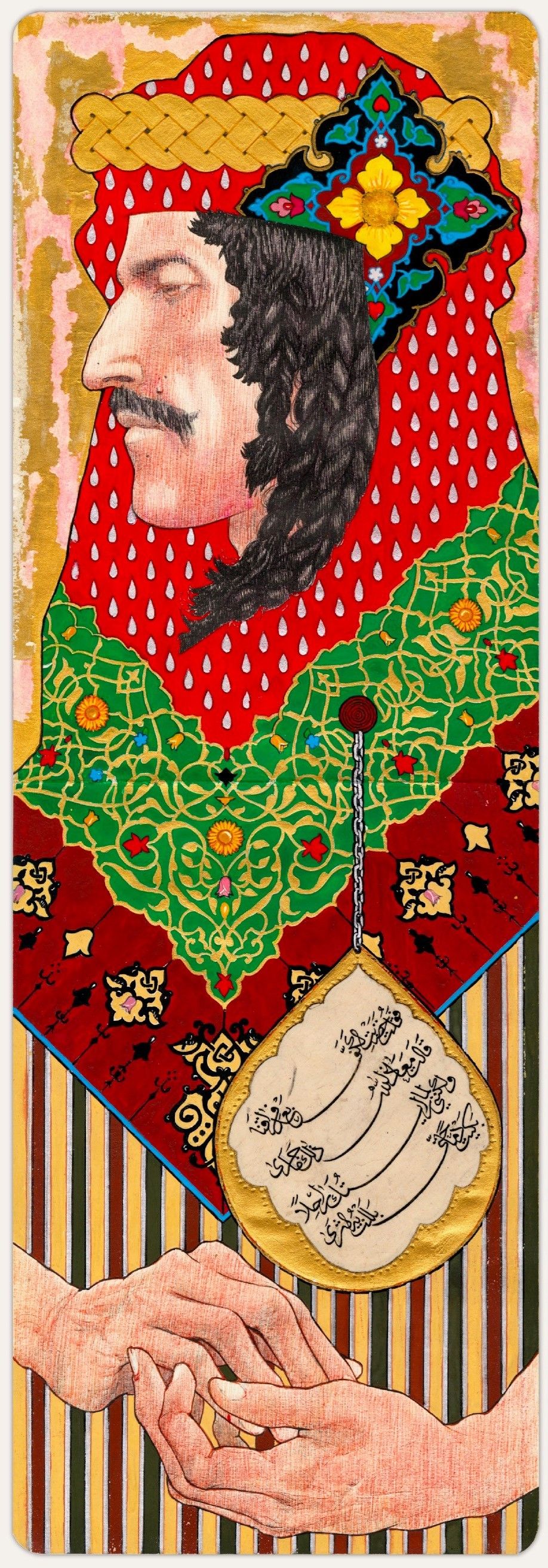
Qays ibn al-Mulawwah. Drawing: Ink and gouache on paper، Writing: Arabic ink on crushed mulberry paper. Drawing: Obaid Ba Humaid، Calligraphy: Mohammed AlSalhani. Courtesy of the artist Obaid Ba Humaid.
Obaid came up with the idea of creating an imaginary representation of the two characters, Layla and her madman Qays, each on a separate sheet of paper, and writing the verses describing the henna scene between the two drawings to form the link that connects them. Just as poetry was the means by which lovers communicated in the past, it became the bridge that connects the two separate drawings.
Mohammed wrote the seventy two verses in full on refined and aged paper in Naskh and Riqa' scripts. The poem is in the middle, with Qays and Layla to its right and left.
Although the lovers' love did not end happily, they left us an immortal legacy of poems and stories that are timeless and sung by lovers to this day.
